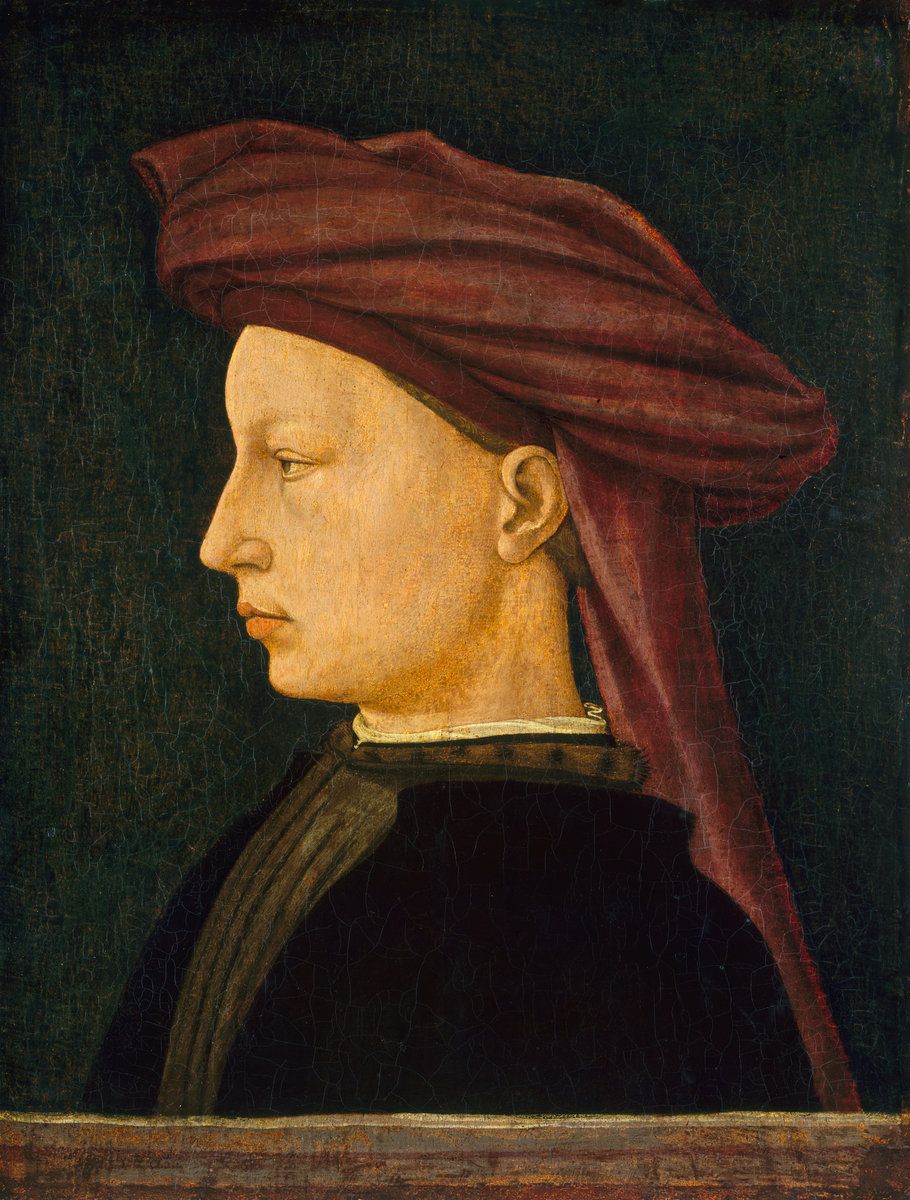Profile Portrait of a Young Man

Alexis-Francois Artaud de Montor [1772-1849], Paris, acquired probably during his stay in Florence between 1805 and 1808; (his sale, Hotel des vents mobilieres, Paris, 16-17 January 1851, no. 115, as by Masaccio). (John Hahn, Paris). (Jules Feral, Paris); purchased June 1936 by (Duveen Brothers, Inc., London and New York); purchased 15 December 1936 by The A.W. Mellon Educational and Charitable Trust, Pittsburgh; gift 1937 to NGA.
After a stay in Rome, where he worked at the French embassy and was in contact with the collector Francois Cacault, Artaud de Montor served as a secretary in the French embassy in Florence between 1805 and 1808. His collection was probably formed largely during that time; in 1808 it already numbered 110 pieces and two years later 150 works (see J. Perot, "Canova et les diplomates francais a Rome: Francois Cacault et Alexis Artaud de Montor," Bulletin de la Societe de l'Histoire de l'Art francais [1980]: 221-222). A certain number of his paintings came, as he himself stated (Alexis-François Artaud de Montor, Peintres primitifs. Collection de tableaux rapportee d'Italie, Paris, 1843: 14 n. 1), from the collection of an Englishman who used to live in Florence and had created his collection about sixty years earlier. According to the hypothesis of Tancred Borenius ("The Rediscovery of Primitives," The Quarterly Review 239 [April 1923]: 258-271), the unnamed person could be the Florentine painter of English origin Ignazio Hugford (Pisa 1703-Florence 1778), whose vast collection also included paintings of the fourteenth and fifteenth centuries; on him, see F. Borroni Salvadori, "Ignazio Enrico Hugford, collezionista con vocazione del mercante," Annali della Scuola Normale Superiore di Pisa 13 (1983): 1025-1056.
According to a statement by Agnes Hahn Brodie, daughter of John Hahn (recorded 1974 in NGA curatorial files), the painting was "discovered" by her father, "a small dealer," in Paris.
According to the correspondence between Edward Fowles of the Paris office of Duveen Brothers, Inc. and Bernard Berenson (copies in NGA curatorial files), on the basis of a photograph, Berenson recognized the painting as a work by Masaccio and suggested its acquisition on 4 June 1936. A letter to Berenson of 30 June announces that the painting was acquired from Feral.